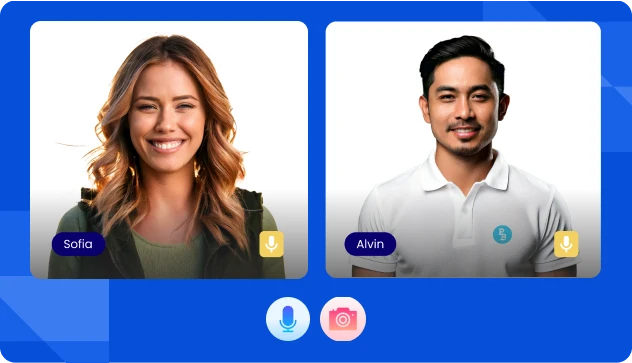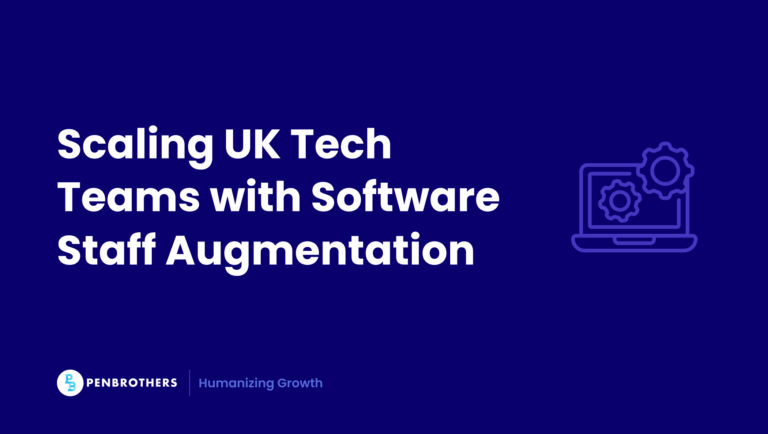Imagine a site that looks stunning but loads slowly or one that’s lightning-fast but completely off-brand. That’s the design paradox: beauty without performance can frustrate users, and speed without style can undermine credibility. Hiring a web designer is not just about visuals. It’s about aligning brand identity with conversion-driven performance.
This article walks you through practical steps, common pitfalls, and performance-focused evaluation, so you end with a website that looks great and delivers results.
Define What You Need Before You Search
Start with clarity: what are your business drivers?
- Clarify your goals: Are you launching a new site or refreshing your brand? Do you need conversion optimization, mobile-first design, or SEO‑ready structure?
- List must-have features: Think e-commerce, booking functions, SEO plugins, and accessibility compliance (e.g., WCAG).
- Set your scope: Select between full build, redesign, or ongoing design and maintenance. If your design project is part of a fully remote build, our guide to Filipino remote teams shares proven ways to collaborate effectively across time zones.
Reddit-backed tip: A client shared how their developer “will not give us admin access to our own website”, a dispute easily avoided by specifying ownership of hosting, DNS, and site files in the contract. Define who owns and manages those assets before signing.
Know Your Options: Freelancer, Agency, In-House, or Offshore Partner
Before you post a job ad or browse portfolios, decide which type of designer setup fits your project scope, budget, and timeline. Each option comes with trade-offs:
- Freelancers – Affordable and flexible. Ideal for one-off projects, small businesses, or quick refreshes. The talent pool is vast, but quality can vary; vet thoroughly to avoid mismatched styles or missed deadlines.
- Specialized Design Agencies – Focus solely on creative work, with structured workflows, brand-first processes, and diverse portfolios. You’ll get a team approach, design consistency, and stronger brand alignment, but expect higher fees and stricter timelines.
- Full-Service Agencies – Combine design with marketing functions like SEO, PPC, and CRO. Best for brands wanting a launch-ready site built with growth strategies in place. Higher cost, but offers a one-stop shop for design and measurable ROI.
- Fractional or Flexible Designers – Provide part-time or on-demand support without a full-time salary. Useful for ongoing updates, campaign-specific pages, or seasonal redesigns, especially if you have an in-house marketing or dev team.
- Offshoring Partners – Source pre-vetted global talent (including full-time remote hires) through a staffing provider. This gives you the cost efficiency and scalability of outsourcing with added reliability from structured onboarding, compliance, and ongoing support. For a deeper look at how to balance cost savings with quality, see our post on the best Filipino talent outsourcing.
Pro Tip: If your main priority is brand cohesion, a specialized design agency or long-term fractional designer may fit best. If performance metrics (SEO, CRO, analytics) are equally critical, consider a full-service agency or offshoring partner that can integrate both.
How to Vet a Web Designer for Brand Alignment and Performance
Verifying certifications and scanning portfolios isn’t enough to gauge a designer’s true capability. The most reliable way to evaluate candidates is to see them in action, solving real design challenges that test both creative flair and technical precision.
Core skill areas to evaluate:
- UX/UI Design – Assess their grasp of user experience principles, wireframing techniques, and interface design skills. Strong UX/UI ensures your site is intuitive, visually consistent, and aligned with your brand identity.
- Figma Proficiency – Test their ability to use collaborative design tools for prototyping, iteration, and team feedback. This reveals how well they can work in modern, distributed design workflows.
- Critical Thinking – Look for structured problem-solving approaches to design challenges and user experience optimization. The right candidate should be able to explain why a design choice improves engagement or conversions.
- HTML5 & CSS – Even if they aren’t coding full-time, a solid technical foundation ensures they can collaborate seamlessly with developers and create designs that are feasible, scalable, and performance-friendly. For IT-heavy projects, check out our list of the best IT recruitment agencies to understand how leading firms screen for both creative and technical expertise.
Pro Tip: Use validated skills assessments (such as TestGorilla) to benchmark candidates before diving into their portfolio. This helps you focus on designers who meet your baseline standards in both creativity and technical skill.
For specialized needs, like e-commerce platforms, SaaS products, or content-heavy media sites, integrate custom tests, design challenges, or tailored portfolio reviews. This ensures the designer can translate your brand voice into functional, high-performance design.
Essential Questions to Ask Before Signing
Before committing to a web designer, whether freelancer, agency, or in-house, get clarity on the fundamentals. These questions protect your investment, prevent ownership disputes, and ensure the project runs smoothly from kickoff to post-launch.
1. Who retains ownership of all deliverables?
Confirm who owns the code, design files, images, hosting account, and DNS records once the project is complete. Without clear terms in the contract, you risk losing control over critical assets if the relationship ends.
2. What is the design process and project timeline?
Ask for a detailed roadmap including key milestones, mockup delivery dates, revision rounds, and final launch deadlines. This helps you spot potential delays early and ensures both sides are aligned on expectations.
3. How many revisions are included, and what’s the change policy?
Clarify whether revisions are unlimited within scope or capped at a set number. Understand how out-of-scope changes will be billed to avoid surprise charges.
4. What post-launch support is provided?
Determine if they’ll handle security patches, bug fixes, and minor design tweaks after launch and for how long. A designer who disappears after handover can leave you vulnerable to performance issues and security risks.
5. How will they collaborate with your internal team?
Ensure they can integrate smoothly with marketing, developers, and content teams. Ask what tools they use for communication and project management (Slack, Trello, Asana, etc.) and whether they can adapt to your workflows.
6. How do they handle performance testing?
Go beyond aesthetics, ask how they test for page speed, mobile responsiveness, accessibility compliance, and SEO readiness before launch.
Pro Tip: Get all answers in writing as part of your service agreement. Clear documentation prevents misunderstandings and gives you leverage if deliverables fall short.
Red Flags to Avoid
Not every web designer will be the right fit, some warning signs can signal costly problems down the line. Watch for these before you sign a contract:
1. Heavy reliance on uncustomized templates
If their portfolio shows identical layouts with minimal branding tweaks, you risk ending up with a cookie-cutter site that fails to reflect your brand identity. While templates can speed up delivery, they should be strategically customized for performance, UX, and differentiation.
2. Refusal to hand over site files or admin access
If they’re unwilling to transfer full control of the hosting, DNS, or CMS admin account, consider it a deal-breaker. Without ownership, you could face “hostage situations” where updates or migrations become impossible without their approval or extra fees.
3. Undefined revision and performance-testing policies
A lack of clarity on how many revision rounds are included or no mention of testing for page speed, mobile responsiveness, and accessibility can lead to endless back-and-forth or a launch riddled with technical issues. Always request written parameters in the contract.
4. Promises without measurable outcomes
Beware of designers who sell only on visuals, e.g., “We’ll make it look amazing” without discussing load times, SEO readiness, or conversion goals. Design must serve both aesthetics and performance, or your site risks being beautiful but ineffective.
Pro Tip: Ask for case studies or before-and-after metrics from past projects. A designer who can show tangible improvements like faster load speeds, higher conversion rates, or improved Core Web Vitals is far less likely to underdeliver.
Embedded Strategic Insight with Data Sources
In today’s remote-friendly work environment, flexible hires and global talent have become essential:
- The global offshore staffing market is projected to reach $525 billion by 2030, with 92% of G2000 companies leveraging IT outsourcing.
- According to Reuters, the Philippine IT-BPM (Information Technology and Business Process Management) industry is forecast to achieve $38 billion in revenue and employ approximately 1.82 million Filipinos in 2024. The sector is projected to grow to 2.55 million jobs and $59 billion in revenue by 2028.
- Cost savings are major, IT roles cost 59–75 % less in the Philippines compared to U.S. tech hubs.
Meanwhile, remote and hybrid work aren’t going away, organizations must adapt:
- In Q1 2025, 40 % of U.S. jobs offered remote flexibility. Fully remote roles increased to 13%, hybrid roles to nearly 24%.
- Recent data shows that, in early 2025, fully remote jobs comprised a consistent 6% of all new job postings, a level that’s held steady since late 2024.
- Over 51 % of professionals split time between home and office. Remote work improves morale, but 76 % report working outside office hours, flagging potential burnout.
What this means for you: A global hiring strategy, especially tapping markets like the Philippines, offers cost-effective access to skilled designers, while reflecting the flexibility remote candidates expect. Just be sure you still set clear performance benchmarks, ownership terms, and delivery expectations.
The outsourced jobs in the Philippines report shows the breadth of creative and technical roles available through offshore staffing, including web designers.
For a broader tech talent strategy, our overview of remote IT jobs you can outsource explains how design fits into a performance-driven build.
Final Thoughts
Brand and performance can’t be separated. A website must both look and work great. Be meticulous: define your needs, vet for brand and performance fit, ask the right questions, and avoid contract or process red flags.
Take your time to vet carefully and schedule consultations with your top candidates this week. If you want a shortcut to pre-vetted, high-performing web designers who can integrate seamlessly with your team, Penbrothers can help. We source top creative talent in the Philippines, handle onboarding and compliance, and ensure your designer is set up to deliver both beauty and business results.
Explore how we connect brands with world-class creative professionals.






